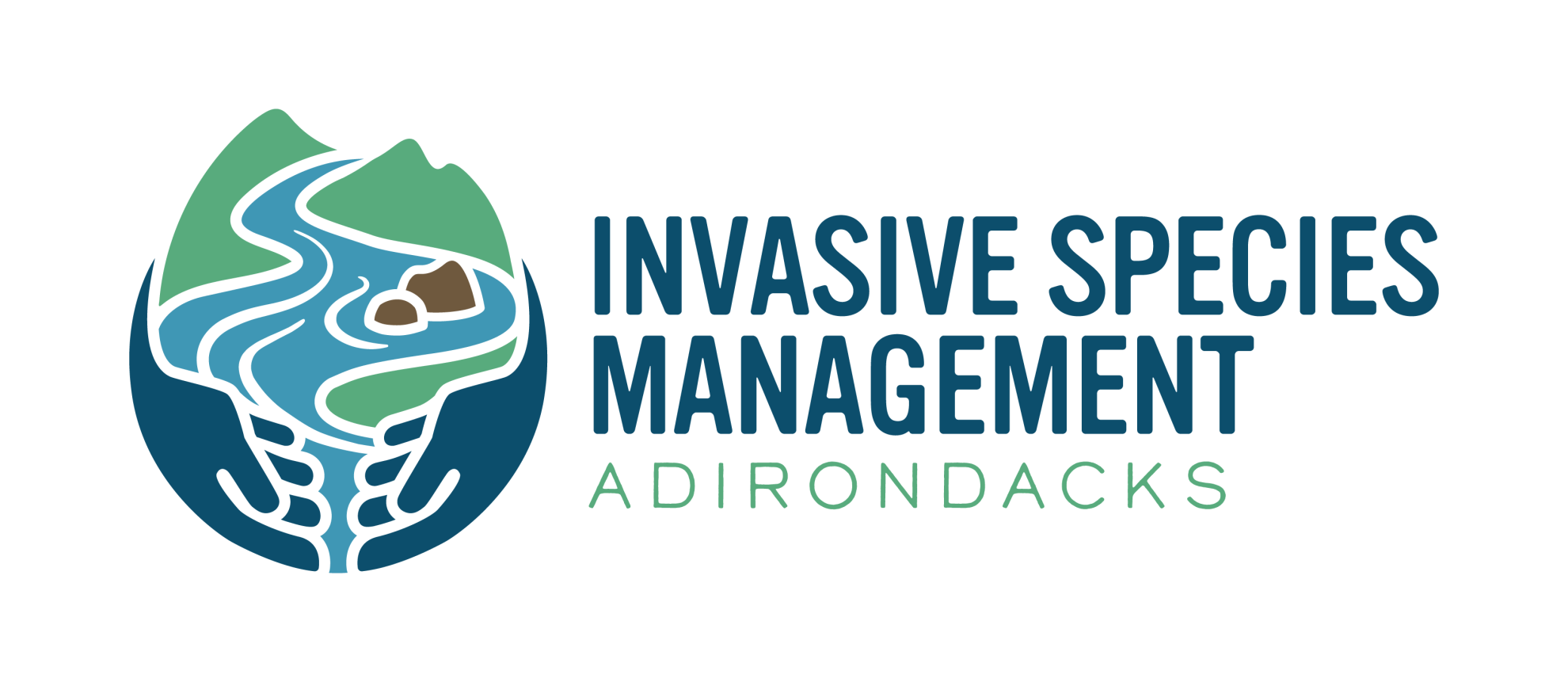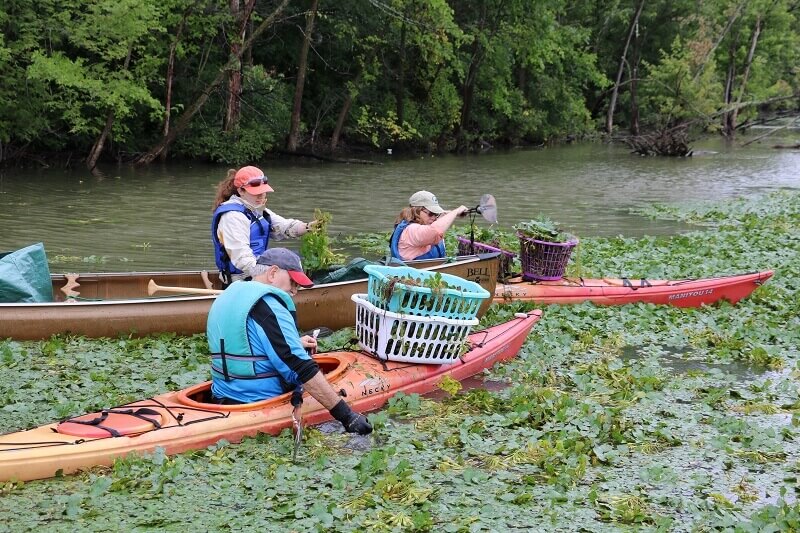Aquatic Infestation Controls
- Home
- Aquatic Infestation Controls
Aquatic Infestation Management
The most effective form of Aquatic Invasive Infestation Management is prevention, prevention, prevention! Follow APIPP’s advice on how to prevent the spread via Clean, Drain, Dry practices that remove hitchhikers traveling across water bodies on boats, fishing gear, and outboard motors. Keeping an eye on your local habitat helps to detect the occurrence of invasive plants and animals early before populations bloom, take a foothold, and are hard to remove. Be aware of what aquatic invasive organisms might be lurking in lakes, streams, rivers, and ponds by visiting APIPP’s online species library or join one of our upcoming trainings. For questions and help with ID, please reach out to our staff today! More detailed explorations of all the following methods are available in APIPP's Invasive Species Best Management Practices publication.
Hand Harvesting
Hand harvest” involves removing aquatic invasive plants growing from lake and stream bottoms or that are floating on the surface. Depending on each plant’s growth habit this task might be performed below or on the water. For floating plants, harvest can be conducted from a boat or by wading in the shallows. For submerged plants, trained SCUBA divers should be deployed. Plants and their associated stems and roots need to be handled carefully in order to not break off and inadvertently propagate population growth within a system. Plant matter is removed and placed into fine, mesh bags for collection in order to let water drain out without releasing vegetative matter. Back on land, plants are disposed of or composted in thermophilic systems that increase in temperature hot and long enough to kill seeds and roots/rhizomes.
Hand Harvesting Effectiveness:
-
Can be effective for eradicating small sized infestations that were detected early
-
Can contain or suppress medium to large sized infestations of Eurasian watermilfoil, variable-leaf watermilfoil, parrot-feather, fanwort, curly-leaf pondweed, Brazilian elodea, hydrilla, water chestnut, European frog-bit, and yellow floating heart
-
Can reduce impact of early detected, small infestations of Asian clams, quagga mussels, and zebra mussels
-
Should occur prior to each species’ production of offspring, seeds, nutlets, tubers and/or turions that, in the Adirondacks, typically form in late summer
-
Gently hand-pull all plants from the sediment by the roots. Plants should be pulled slowly to minimize fragmentation. Special attention should be given to ensure that the root ball, if present, is removed and that all plant fragments which may be produced during the harvesting operation are collected
-
Particular care must be taken when collecting zebra and quagga mussels as sharp shells can produce cuts which may be prone to infection
Tips on Disposal:
-
Bag all biomass and remove from the management site
-
Aquatic invasive mollusks should be killed by freezing them for at least 24 hours or allowing them to dry in the sun for at least a week before disposal in an approved landfill
-
Aquatic plants can be composted in upland locations or disposed of in approved landfills
-
If transporting harvested material off-site is not feasible due to volume and/or distance, harvested plants may be scattered on adjacent upland areas at least 50 horizontal feet from the shoreline and in a manner that will not compete with native vegetation
-
On state lands, all harvested biomass should be removed and properly disposed of off-site
Benthic Barriers
Benthic barriers are mats are made of plastic, fiberglass, nylon, or other opaque materials placed over: 1) submerged aquatic invasive plant beds to block sunlight (prevents photosynthesis and, thus, keeps plants from growing); or 2) aquatic invasive mollusk populations to reduce/eliminate available oxygen they need to survive.
For shallow infestations, barriers can be installed by wading. For deeper infestations, benthic barriers should be installed by trained SCUBA divers. Overlap each barrier by four to six inches to prevent vegetation from escaping between seams. Larger overlaps may be necessary to deplete oxygen levels for invasive mollusk control. Barriers should be securely fastened to the benthos with stakes or anchors and must be designed to allow venting of anoxic gases naturally generated by bacterial processes occurring in sediments beneath the barrier.
Benthic Barrier Effectiveness:
-
Can effectively suppress, contain, or locally eradicate early detected small to medium sized infestations of Eurasian watermilfoil, variable-leaf watermilfoil, and curly-leaf pondweed
-
Can cover plant populations if installation occurs during low growth periods (usually in early spring after ice-out)
-
Since this method prevents growth from taking place, disposal of harvested biomass is not necessarily required
Drawbacks
-
Large scale benthic barrier deployment is logistically challenging and cost prohibitive
-
Due to costs, controlling zebra mussels, quagga mussels, or Asian clams is limited to infestations in select areas of concern (i.e.. public beaches, marinas, etc.)
-
Heavy plant growth can impede installation of barriers - should be installed early in the field season during low growth periods
-
Unselective and will impact all species of flora and fauna under the matted area
-
Can become dislodged by wave or propeller action
Mechanical Harvesting
Mechanical harvesting utilizes a specialized watercraft to cut and collect floating or submerged aquatic invasive plant material from a water body. Plants are collected and conveyed onto a harvester for disposal on land. Navigating the mechanical harvester through large floating or near-surface aquatic invasive plant infestations to cut and collect all accessible plant material. Multiple harvests may be required each season to maintain open navigation channels, suppress infestations to desired levels, or reduce lake user impacts. When managing aquatic invasive plants, harvesting should be completed before plants produce seed or vegetative propagules.
Mechanical Harvesting Effectiveness:
-
Can be effective in suppressing large sized infestations of Eurasian watermilfoil, variable-leaf watermilfoil, hydrilla, European frog-bit, and water chestnut.
-
This technique is most commonly used to suppress large, dense infestations and remove plant biomass to reduce lake user impacts and must be repeated annually and in some cases multiple times annually
Drawbacks:
-
Generally unselective, as all vegetation within the path of the harvester will be cut and removed.
-
Fragmentation of aquatic invasive plant material resulting from harvesting operations can facilitate the spread of species that auto-fragment.


